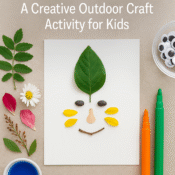
Eat Like a Local: The Science of Traditional Utensils
What Can Utensils Tell Us About Culture—and Physics?
A fork. A pair of chopsticks. Your bare hands. Each eating method tells a story not only about tradition, but also about how humans adapt to tools, materials, and environment. Whether you’re scooping curry with naan or slicing steak with a serrated knife, the way we eat is a blend of biology, engineering, and anthropology.
In this World Culture Explorers post, we’ll dive into the science behind traditional eating utensils. Through playful experiments, kids can investigate muscle use, angles, grip, and even gravity—one bite at a time.
Why This Matters: Tools Shape How We Taste and Learn
Food is one of the most tangible windows into a culture. But often, the utensils we use are treated as background noise. In truth, they play a huge role in how we experience flavour, share meals, and even develop fine motor skills.
From bamboo chopsticks to spoons carved from coconut shell, understanding eating tools gives us an appreciation for global design thinking—and how physics meets culture at the dinner table.
Cultural Mechanics in Action Activity 1: Muscle vs Method – Global Utensil Showdown
Objective: Compare how different utensils engage hands, wrists, and coordination.
Materials:
- Fork, spoon, chopsticks, and clean hands
- Stopwatch or timer
- Soft food items (grapes, cooked rice, jelly cubes, crackers)
- Observation chart (for speed, accuracy, control)
Steps:
- Set up four identical food samples per person.
- Try moving each food item from one bowl to another using each utensil.
- Record how long each takes and note dropped items.
- Try it again with your non-dominant hand!

What to Observe:
- Which utensils were easiest or hardest?
- Which muscles did you notice working more?
- Did certain foods work better with certain tools?
Activity 2: Plate vs Bowl – Gravity Games at the Table
Objective: Test how dish shape and utensil use interact to aid or hinder eating.
Materials:
- Shallow plate and deep bowl
- Spoon and chopsticks
- Water marbles or cooked noodles
Steps:
- Place food in plate and try picking it up with each utensil.
- Repeat with bowl.
- Compare ease, speed, and spillage.
What to Observe:
- How does gravity help or hinder with each vessel?
- Which combinations worked best?
- How might culture influence bowl vs plate preferences?
Quick Swaps for Mealtime Makers
- DIY Mini Utensil Models: Use toothpicks, paper, and string to create your own cultural tool sets.
- Sensory Texture Food Tray: Use banana, jelly, rice, and bread to explore what foods feel better eaten by hand or tool.
These are perfect for younger learners or at-home family workshops.
Extend the Learning
To dig deeper into global utensil design:
- Study the materials used (bamboo, wood, plastic, bone)
- Compare single-use vs reusable options for environmental impact
- Research etiquette differences around the world (e.g., slurping, left-hand taboos)
Recommended resources:
- What’s for Lunch? by Andrea Curtis
- National Geographic Kids “Food Around the World”
More Than Just Tools
Eating isn’t just about what’s on the plate—it’s about how you engage with it. By experimenting with utensils, kids gain insight into physical dexterity, cultural identity, and global traditions.
Next week, join us as we tour global houses from nomadic tents to timber lodges!
Free Downloads
Eat Like a Local Activity Pack (PDF)
- Utensil Comparison Chart
- Bowl vs Plate Gravity Worksheet
- Quick Cards: DIY Mini Utensils + Texture Tray Guide




